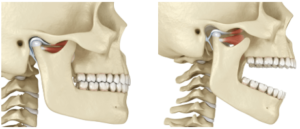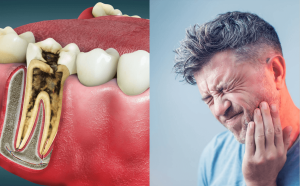
Let me guess…
You’ve got that annoying tightness in your jaw.
Maybe your head pounds behind your eyes by 3 p.m.
Your neck feels like it’s been in a car accident after every Zoom call.
And let’s not even talk about the “click-pop-snap” soundtrack every time you yawn.
Most people brush it off.
“You’re just stressed.”
“Try a mouthguard.”
“Maybe you slept weird.”
But here’s the truth:
If you’ve got pain in your jaw, head, or neck… it might not be your stress.
It might be your TMJ.
Wait — What’s TMJ Again?
TMJ stands for temporomandibular joint — the fancy name for your jaw joint.
It’s where your jawbone meets your skull, and it’s one of the most complex (and overworked) joints in your entire body.
It opens, closes, slides, and rotates. It helps you chew, talk, yawn, and — unfortunately — grind your teeth during traffic or stressful emails.
And when this joint stops working properly, it creates a ripple effect throughout your entire head and neck.
🚨 7 Signs You Might Have TMJ Dysfunction
- Jaw clicking or popping
- Headaches (especially in the temples)
- Pain when chewing, talking, or yawning
- Neck tension that never goes away
- Locked jaw (can’t open or close fully)
- Tooth pain without dental issues
- Clenching or grinding at night
If one or more of those hit home… you’re not alone.
TMJ dysfunction affects up to 12% of the population — and most people suffer without ever getting it addressed.
What Actually Causes TMJ Issues?
You don’t have to get punched in the face to mess up your jaw.
TMJ problems are often caused by:
- Poor posture (hello tech neck)
- Chronic clenching or grinding (bruxism)
- Stress and anxiety
- Jaw misalignment
- Previous injuries
- Even excessive gum chewing or one-sided eating
But here’s where it gets interesting…
The problem isn’t always in the joint itself.
Most TMJ dysfunction starts in the muscles around the joint — especially the pterygoids, masseter, and temporalis muscles.
Quick Breakdown: What’s Really Going On in There?

- Lateral Pterygoid: Helps you open your jaw — but when tight, it can pull the TMJ disc out of place. This is often the source of that annoying clicking or popping.
- Medial Pterygoid: Creates side-to-side jaw motion. Dysfunction here = muscle pain that mimics ear or throat issues.
- Masseter: One of the strongest muscles in the body. When it’s tight, it can cause jaw pain and even tooth pain.
- Temporalis: Runs along your temples and contributes to headaches. Fun fact: it often stays in a constant state of contraction — which is exactly why so many TMJ sufferers also get migraines.
What Can Be Done (That Actually Works)?
The good news?
TMJ dysfunction is highly treatable — if you go beyond the typical “wear this mouthguard and hope it goes away” approach.
Here’s what we focus on in our office:
✅ Trigger point therapy
✅ Ischemic compression & muscle release techniques
✅ Chiropractic adjustments to restore jaw & neck alignment
✅ At-home stretching & breathing techniques
✅ Root-cause identification (stress, posture, bite imbalance, etc.)
We don’t just treat symptoms. We retrain the system.
Real Talk: You Don’t Have to “Just Live With It”
If you’re constantly dealing with headaches, jaw tension, or unexplained neck pain — don’t settle for band-aids.
We see TMJ patients every week, and they’re shocked by how much better they feel once the jaw starts working like it’s supposed to.
In fact, many patients say things like:
“I thought it was just stress… turns out it was my jaw the whole time.”
“I haven’t had a migraine in 3 weeks.”
“My dentist never even mentioned this was possible.”
When You’re Ready…
If any of this sounds like you, let’s chat.
A quick TMJ assessment could be the first step toward fewer headaches, better sleep, and finally feeling like yourself again.
👉 Book a TMJ evaluation here
👉 Or grab our FREE 7 Keys to Unlocking Your Health ebook here
Because pain isn’t always where the problem is.
Sometimes, it’s one joint away from relief.







